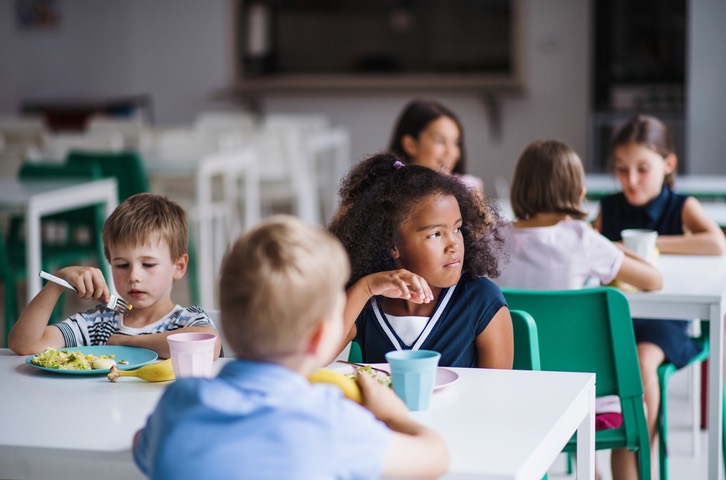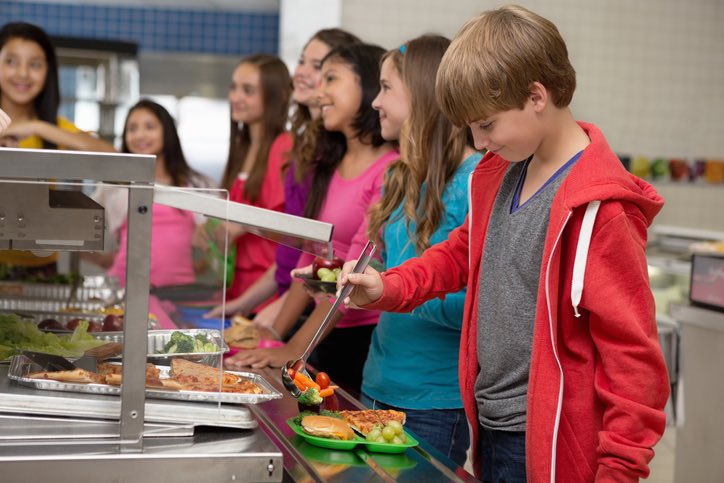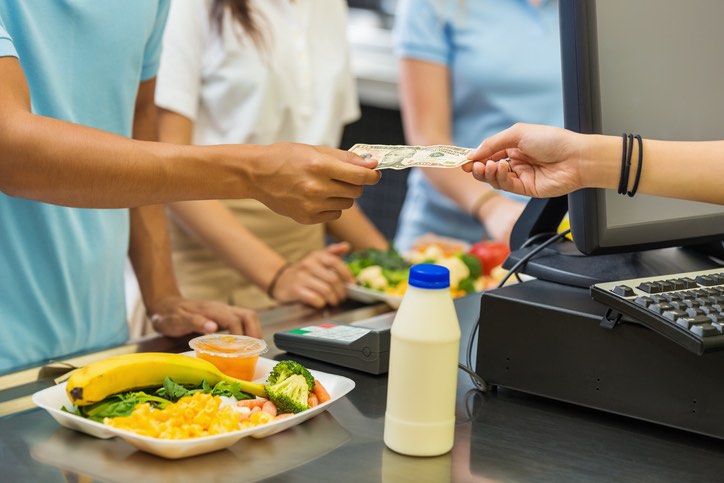Do You and Your Kids Qualify for the National School Lunch Program?

Free school meals have long been an option for children of low-income families. The National School Lunch Program (NSLP) is operated by the USDA’s Food and Nutrition Service (FNS). Before the pandemic, the program served 30 million school lunches daily, with 25% qualifying under the free or reduced meal program. In addition, another nearly 12 million free or reduced meals were served daily through the School Breakfast Program.
During the height of the COVID-19 pandemic, a waiver from the federal government provided all children, regardless of income, free meals during the school year and the summer break. So in my state, even though we’re above the income bracket, my children received free lunches during the 2021/22 school year.
Even when schools were closed, virtual or semi-virtual, parents and guardians could walk up to distribution points at their local school and pick up a free meal each day. I saw this happen several times throughout the pandemic when I would take my kids to their school on lunch breaks to play on the playground or neighboring basketball court.
The Keep Kids Fed Act was extended by Congress on June 25th, 2022, which allowed some children to continue receiving free meals through the summer. However, the extension barely passed as many Republican lawmakers stood in opposition to extending free meals.
Related: Help! After School Activities and Child Care Cost Too Much
The waiver program that began under the Trump administration and continued by the Biden administration required states to apply for free lunches for their students; not all states applied or reapplied when Biden renewed the plan. Now with the plan's expiration, some states have chosen to continue offering free meals while others have adjusted or changed the parameters under which a family qualifies.
The following sections address USDA qualification guidelines, how to apply, issues or concerns with the NSLP, and handling school lunch debt.
USDA Free Lunch Program Guidelines

There are several different ways your child may qualify for a free or reduced lunch under the current USDA guidelines.
“The U.S. Department of Agriculture (USDA) and the Biden-Harris Administration fully support the school leaders and school meal heroes running the school meals programs. Together, we will keep working to support schools and making sure children can get healthy meals in the coming school year.”
Community Eligibility
If your school uses the “Community Eligibility Provision,” all children attending the school are eligible to receive free school meals without needing an application. It is primarily used in low-income school districts. Contact your child’s school to see if they are part of the CEP.
Schools that use the CEP receive government reimbursement based on the percentage of students categorically eligible for free meals. You can find more information on the CEP by clicking here.
Automatic Eligibility
If anyone in your household receives SNAP (Supplemental Nutritional Assistance Program), TANF (Temporary Assistance for Needy Families), or FDPIR (Food Distribution on Indian Reservations) benefits, your child is automatically eligible for free meals.
In some states, children that receive Medicaid are also automatically eligible. Your child’s school should contact you if you are eligible for automatic eligibility.
Income Eligibility
The most common way children are eligible for free or reduced-price meals is income eligibility. The income threshold for a family of four is an annual household income of $51,338. Hawaii and Alaska have higher limits.
You can see the complete income scale by clicking here. To complete the application, contact your child’s school. Many schools offer the application online, so visit your school’s website and look there. You can apply for free or reduced meals anytime during the school year.
Other Eligibility Situations
Children who are homeless, runaways, in foster care, or whose parents are migrant workers may also apply for free or reduced meals.
Food Served by Schools

Schools are doing their best to serve the food listed on their monthly menus; however, schools face the same supply and demand issues as grocery stores and restaurants, and changes are sometimes made. Therefore, the USDA asks parents to be patient with school food authorities as they do their best to ensure children healthy meals.
To help alleviate some shortages and supply chain issues, the USDA encourages schools to source as much food as possible locally.
School food served through NSLP at public schools must meet Federal nutrition standards, updated in the Healthy, Hunger-Free Kids Act of 2010 (HHFKA).
Concerns with the NSLP
While the National School Lunch Program undoubtedly helps millions of children avoid hunger, providing them with at least one or two meals per day, not everyone is a fan of the program.
Like all federal programs, it has flaws. Over 30 million kids currently receive meals through the school nutrition program. However, one prominent concern people have is the strain on taxes the lunch program causes.
A second concern is the possible stigma the free lunch program causes. In the past, especially before the introduction of electronic pin systems, children who received free or reduced-priced lunches had different color lunch tickets singling them out. Historically, children who received free or reduced lunches have been subjected to embarrassment and bullying. The thought is that if all children receive free lunch, it erases the stigma.
Food quality and children’s health are a third primary concern of opponents of the program. Studies have shown that children who eat a hot school lunch instead of bringing a packed lunch are more prone to obesity. Additionally, many schools, especially since the coronavirus pandemic, struggle to obtain healthy ingredients for meals due to the rising costs of healthy food.
However, the counterargument is that many children who utilize the NSLP face food insecurity at home, and food programs within schools provide schoolchildren with at least one meal per day.
School Lunch Debt

Because schools will serve children food even if they have no money on their account, many schools face what is known as School lunch debt. School lunch debt is the unpaid meal charges that accrue when children cannot afford regular-price school lunches.
School lunch debt harms schools and communities because the school is responsible for paying off the debt with its funds, essentially taking money from other school programs. The NSLP does supply participating schools with a set amount of federal funding for unpaid debt, but the federal reimbursement isn’t enough to cover the amount of unpaid lunches. On average, the reimbursement rate is $3 per meal, which barely covers the full price of the meal but not the cost of labor, equipment, and supplies.
The NSLP State by State
Each state runs the program differently. For example, some states require school districts with specific poverty thresholds to partake. Alabama does not require any state to participate, Georgia requires all schools to participate in the NSLP, whereas California automatically serves one free meal per school day to every student.
Some states, like Arizona, only require K-8 schools to participate, but others, like Illinois, require all public schools, including high schools, to participate.
To learn more about your state, click here.

